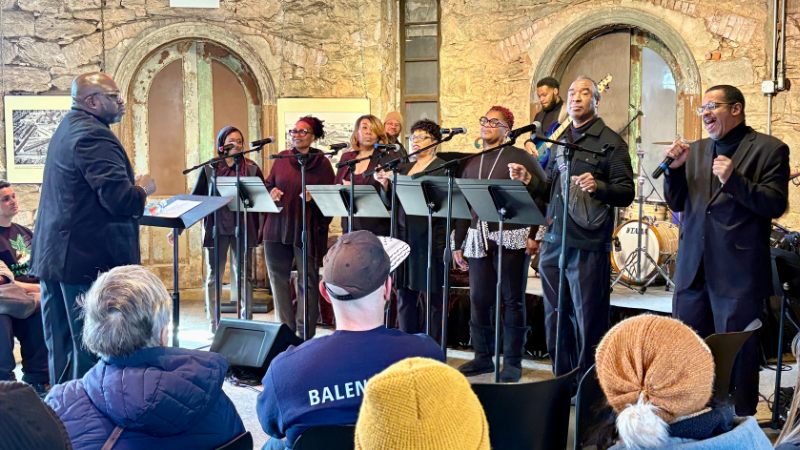Educate. Engage. Empower.
From classroom-ready lesson plans to tours, workshops, and professional development opportunities, we offer content that accommodates a wide variety of learning styles and subject matter, featuring expertise from universities, school districts, and thought leaders across the country. Together, we can shape a transformative learning experience that connects past to present and encourages critical thinking about the pathways forward.
Classroom Resources
Integrate justice education into your curriculum - these innovative tools help educators navigate the complexities of the justice system in a classroom setting.
LEARN MOREAdditional Resources for Educators

Professional Development
LEARN MORE
School Tours & Workshops
LEARN MORE
Justice 101 Panel Discussions
LEARN MORE
Educational Videos
LEARN MOREThe Collaboratory for Justice Education
The Collaboratory for Justice Education, powered by the Eastern State Center for Justice Education, is a dynamic community of dedicated and enthusiastic people with a shared passion for justice education.
LEARN MOREPlan a Group Visit
With virtual, in-person, guide-led, and self-guided options, there’s something for everyone at Eastern State. Learn more and make your group reservation today.
Upcoming Justice Education Events
Justice 101
Monday, September 01 - Friday, July 31, 2026
Join us as we dive into some of the most pressing issues in criminal justice today, through a historical lens and with a focus on civic education. Each program includes interactive online or in-person elements, expert voices, and opportunities for community dialogue. Powered by the Eastern State Center for Justice Education.
Justice 101: Civil Rights Behind Bars
Wednesday, January 14, 2026
2:00pm - 3:00pm
Online event. Join us for a compelling conversation on the history of civil rights movements inside American prisons.
Dr. Martin Luther King, Jr. Day
Monday, January 19, 2026
12:00pm - 2:15pm
Free online. Included with admission in person. Join us for an immersive 2-hour experience exploring the ongoing struggle to hold America accountable to its founding promise—that all people are created equal and entitled to fundamental rights.
Justice 101: The First Amendment and Incarceration: Natural Right to Freedom of Expression
Sunday, February 01, 2026
All Day
Date and details to be confirmed—please check back for updates.
Justice 101: Women and Incarceration
Sunday, March 01, 2026
All Day
Date and details to be confirmed—please check back for updates.
Scout Days
Saturday, March 14 - Saturday, November 14, 2026
Led by our engaging staff, all Scout Days participants will enjoy interactive discussions and activities. Members of Scouting America and Girl Scouts of the USA will also meet badge requirements.
Virtual Scout Day
Saturday, March 14, 2026
All Day
Led by our expert staff and partners with expertise in historic preservation, architecture, and construction trades, scouts will enjoy a full day of virtual, interactive discussions and activities. Details to be confirmed—please check back for updates.
Justice 101: To Establish Justice: Reentry and Recidivism
Wednesday, April 01, 2026
All Day
Date and details to be confirmed—please check back for updates.
In Person Scout Day
Sunday, April 19, 2026
All Day
Led by our engaging staff, all In-Person Scout Day participants will enjoy interactive discussions and activities. Members of Scouting America and Girl Scouts of the USA will also meet badge requirements. Details to be confirmed—please check back for updates.
Justice 101: National Historic Preservation: The Power of Place
Friday, May 01, 2026
All Day
Date and details to be confirmed—please check back for updates.
Justice 101: The History of the Justice System in England and America
Wednesday, July 01, 2026
All Day
Date and details to be confirmed—please check back for updates.
In Person Scout Day
Saturday, November 14, 2026
All Day
Led by our engaging staff, all In-Person Scout Day participants will enjoy interactive discussions and activities. Members of Scouting America and Girl Scouts of the USA will also meet badge requirements. Details to be confirmed—please check back for updates.




